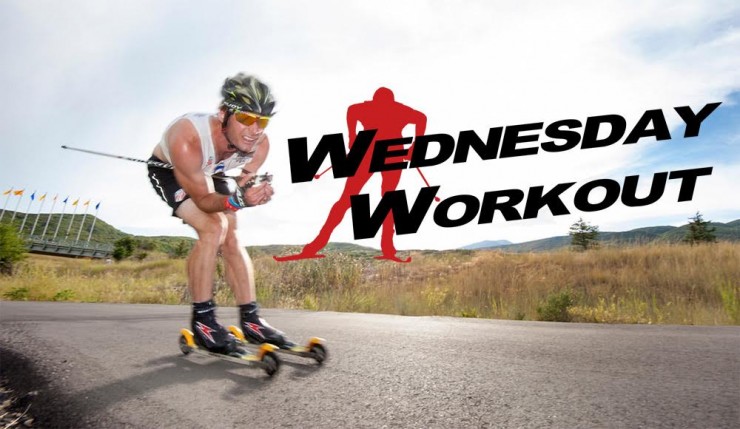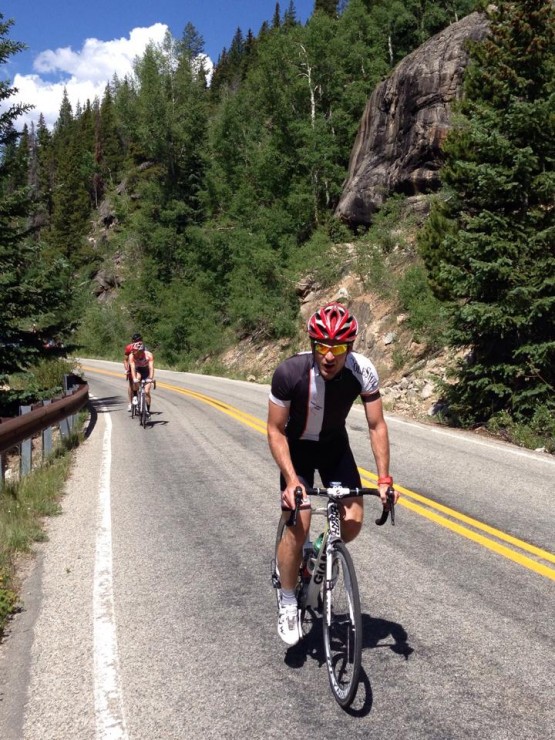
For this week’s workout, we sought the expertise of the reigning national champion, Bryan Fletcher, who won his second-straight title at U.S. Nordic Combined Championships last weekend in Park City, Utah.
The older of two brothers on the U.S. Nordic Combined Team, Fletcher led the championships jump on the large hill and held off his hard-charging teammate, Adam Loomis, in the 10-kilometer rollerski race for the win. Fletcher, 29, edged the 23-year-old Loomis by 5 seconds after starting 26 seconds ahead of him and beat his brother Taylor by 47 seconds after starting 1:04 before him. Loomis placed second and Taylor was third.

“Nationals last week was awesome,” Fletcher wrote in an email. “The comps were intense because the level was high and everyone had a shot at the podium. I was super stoked to feel the pressure the team put on me the whole time, there was no easy victory to be had.”
Loomis had a “career day,” he added and noted that Taylor’s jumping had improved as well.
“That made me nervous too because in most of our summer time trials he has beaten me by almost 2 minutes,” Bryan wrote. “I knew I need a good race to stand a chance.”
Heading into the 10 k rollerski at Soldier Hollow, Bryan focused on pacing — starting conservatively and skiing methodically and controlled throughout the race.

“I needed to have some in the tank for the sprint but the goal was not to let it come down to that,” he wrote. “Luckily the plan worked and I executed it to the best of my ability and came away with the victory. This was a huge relief for me after a long week of school finals, moving to a new apartment, and of course training for the competition.”
In terms of how much a national title means to him, albeit on dry land, he explained he weighed the championships heavily.
“It’s a result a lot of people love hearing about, it adds validity to your resume as a career athlete to be a national champion,” he wrote. “I definitely put some pressure on myself to come away with the win and I am happy I was able to come through on that.”
For a workout he’d recommend, Fletcher picked out one increasingly used by road bikers, and one he assigns some of the athletes he coaches through the Hunter Allen Peaks Coaching Group.
“The cycling world cites the benefit is that it works on both your VO2 max zone and Threshold zone. Or Level 3/4 zone depending on what system you use,” he wrote. “This workout should be done once a month, probably in combination with normal threshold/threshold-plus work.”
The workout is designed for cyclists, but can be done skiing or running, too. “Just adjust the tempo to the corresponding exertion level,” Fletcher explained.
Warm Up: Start with a 20- 30 minute warm up. Include a few pick ups to no longer then a minute and space them out throughout the warm up.
Workout:
– Start with 30 seconds at race pace (90% of max heart rate for the XC crowd) (150% of Functional Threshold Power* for you cyclists)
– Then 30 seconds at Level 2 (60% of max heart rate) or (50% of FTP cyclists)
– Keep this alternation of race pace/Level 2 up for 10 minutes.
– Take a 5 minute break and repeat for a total of 3 sets.
So in total you have, 3 x 10 minutes at 30 seconds on, 30 seconds off.
Cool down: 15-30 minutes at level 1-2 and don’t forget to do your dynamic stretching after!
*FTP or Functional Threshold Power: a term used by many cyclist and cycling coaches. I learned it through Peaks Coaching Group and it simply is the power you can sustain during a 1 hour max TT. This is a cyclist’s true threshold. Many people try to derive this average by only doing a 20 min power test and extrapolating it out to a threshold but often a cyclist has to take 5% of a 20 min test to get a true FTP.



